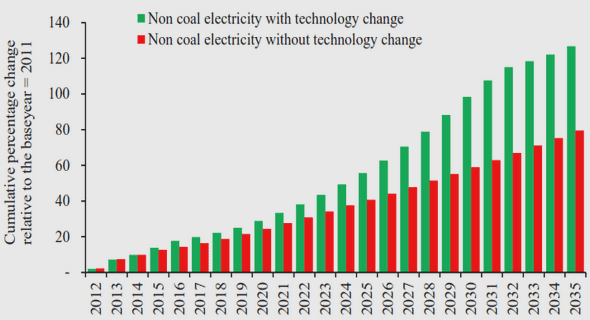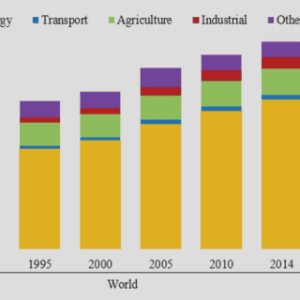(Downloads - 0)
For more info about our services contact : help@bestpfe.com
Table of contents
Introduction
1 Ecological systems in an unsteady world
1.1 Biological systems and scales considered
1.2 Variability encountered
2 Adaptation as a response to uctuations and changes
2.1 Definition of adaptation
2.2 Manifestations of adaptation
2.3 Tools for modeling adaptation
3 Questions addressed in the thesis
1 How community adaptation impacts biodiversity-functioning relationships
1.1 Introduction
1.2 Material and methods
1.2.1 Ecological scenarios and traits
1.2.2 Random and co-adapted communities
1.2.3 Biodiversity-functioning relationships
1.3 Results
1.3.1 Biodiversity-Productivity
1.3.2 Species trait composition
1.3.3 Biodiversity-Stability
1.3.4 Biodiversity-Invasion
1.4 Discussion
2 Evolution of stress tolerance under a tolerance-fecundity trade-o
2.1 Introduction
2.2 Model and Method
2.2.1 Model denition
2.2.2 Analysis
2.2.3 Specic denition and functions for numerical analyses
2.3 Results
2.3.1 Overview of model behavior through sensitivity analysis
2.3.2 Evolutionary equilibrium of stress tolerance x
2.3.3 The evolutionary stability
2.3.4 The relative coexistence surface for two species
2.3.5 Impact of the dose-response curve asymmetry
2.3.6 Evolutionary dynamics with more than one species
2.4 Discussion
3 Migration pulsedness alters patterns of allele xation and local adaptation in a mainland-island model
3.1 Introduction
3.2 Methods
3.2.1 Mainland-island model
3.2.2 Mathematical analysis
3.2.3 Simulations
3.3 Results
3.3.1 A general criterion to predict the impact of migration pulsedness
3.3.2 Neutral alleles
3.3.3 Alleles under selection with co-dominance
3.3.4 Introducing dominant and recessive alleles
3.3.5 Mean tness and pulsedness load
3.3.6 The genomic signature of pulsedness
3.4 Discussion
Conclusions & Perspectives
Appendix
A Supplementary information for Chapter 1
A.1 Modelling of the four ecological scenarios
A.1.1 Niche scenario
A.1.2 Body-size scenario
A.1.3 Life History Trade-o scenario
A.1.4 Trophic scenario: derivation of the Lotka-Volterra form
A.2 Parameter sets explored and those plotted in the main article gures
A.3 Algorithm of community formation
A.4 Metrics used to quantify diversity-functioning relationships
A.4.1 Productivity
A.4.2 Stability
A.4.3 Response to invasion
A.4.4 Metrics for trait composition
A.5 Magnitude of the dierence between random and co-adapted communities
A.6 Coecient of variation of the average interval between trait values
A.7 Results with a limit on possible trait change
B Supplementary information for Chapter 2
B.1 Equivalence between parameters
B.1.1 The fecundity steepness cs
B.1.2 The dose-response steepness s
B.2 Complements for the dose-response parameter choices
B.2.1 Symmetric versions
B.2.2 Asymmetric versions
B.3 Changes in x with the steepness of the fecundity and dose-response functions
B.4 Performance of the species at the evolutionary equilibrium
C Supplementary information for Chapter 3
C.1 Complements to the method
C.1.1 Time scale separation for the mathematical analysis
C.1.2 Gillespie algorithm for the simulations
C.1.3 Simulation time optimization
C.2 Selection values at transitions (gure 4 from the main article)
C.3 Finding sl1 and slopes of nl and n+ around it
C.3.1 Finding sl1 in frequency-independent selection case
C.3.2 Finding the slope of n+ around sl1 as a function of s
C.3.3 Finding the slope of nl, knowing the slope of n+
C.4 Eective migration rate from simulation
C.5 Mean number of migration events before xation
C.6 Simulations without time-scale separation and for dierent population sizes
C.6.1 Large m cases: the \mass » eect
C.6.2 Simulations for various m and N
C.7 Probability that a mainland allele gets xed, mean tness in the island and pulsedness load
C.7.1 Probability f1 that a mainland allele gets xed
C.7.2 Genetic load and pulsedness load
C.8 Likelihood and tting the continuous model on pulsed data
C.8.1 Methodology
C.8.2 The case of a migrant pool distribution centered on a negative value of s
C.8.3 Pulsedness load depending on the allelic distribution of the migrant pool
D Inferring migration pulsedness from a genomic dataset
D.1 Type of data needed
D.2 Model description
D.3 Comparison with stochastic simulations and Chapter 3’s mathematical model
D.4 Fit by a maximum likelihood method




